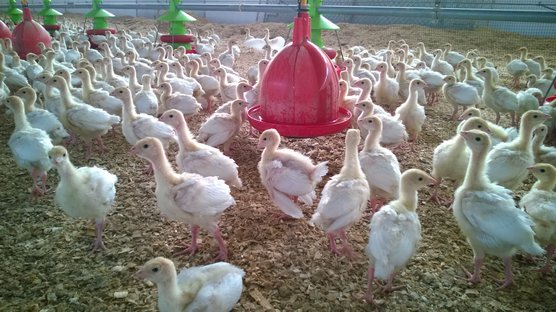
Published on April 11, 2023
Living with Avian Influenza risk: A European perspective
This article is a summary of a recent talk presented at the Turkey Science and Production Conference in Chester, UK by Gérard Lévêque, Global Manager for Animal Health
High Path Avian Influenza (HPAI) is major threat for the poultry industry. Likely this risk is even greater for turkeys than for any other poultry because of their high susceptibility to the virus and their long-life span. HPAI affects animal welfare since infected birds usually suffer and die, either because of the effects of the disease or because regulations require that flocks must be euthanized to stop the spread. It also has negative economic consequences for turkey growers who are already under pressure to get the most value from their flocks. Without a clear path forward, the turkey industry will struggle to sustainably while trying to manage HPAI.
For the past three years, Europe and North America have faced increasing cases of HPAI. Up until recently, we considered that the risk was mostly related to wild birds’ migration flows and more specifically during the autumn migration period (North to South in the Northern hemisphere). This changed in 2022, with outbreaks related to the two migration flows, and in the end, the virus became endemic in the local wild bird’s population. With the changing landscape, it seems clear that now is the time to think about new strategies to control Avian Influenza. There are many potential ways to take action against HPAI, but this article will examine the importance of biosecurity standards and the potential use of vaccination.
High biosecurity standards
Even when wild birds are presented as the source of the outbreak, the main route for contamination is mostly indirect through shoes, material or litter soiled with droppings: the biggest risk for outbreak is right outside the barn door.
If the virus becomes and remains endemic, ensuring that we will never have any outbreaks will be challenging. But it is still important to avoid the spread of the virus causing multiple outbreaks. Animals, material, and staff movements must be reasonable and secured any time it is possible by testing and cleaning/disinfection.
Click here to learn more about implementing biosecurity standards in your barns.
Is vaccination an option?
Vaccination has obvious weaknesses. Scientifically, it is expected that vaccination reduces shedding when a flock is contaminated more than protects a flock against contamination. We do not rely on vaccination for flock protection but on spread control through the excretion reduction. Flock protection depends much more on the correct application of vaccination by its neighbors than on its own immunity. An additional downside of vaccination is its high cost in terms of the material itself as well as the cost of application and extensive sampling protocols.
Vaccination has been traditionally used as a reason for trade restrictions. It is difficult for an exporting country to implement it when not all countries agree on the use of vaccines.
For these multiple reasons, vaccination can’t be left to individual initiative and choice. It must be part of a collective approach based on scientific reflection. Once the strategy and framework are defined, vaccination cannot be optional for defined populations, it must be mandatory.
To control the damaging effects of HPAI, there are a few tools at our disposal. Biosecurity is the first line of defense in controlling and stopping the spread of disease. It is our responsibility to strengthen all elements of biosecurity and to have the willingness to sometimes question our production systems and to be open to adapting them. If the trend observed over the last few years is confirmed and the virus unfortunately becomes endemic in the local wild birds’ populations, it becomes difficult to imagine a sustainable production without the use of vaccine solutions. Vaccination should not be expected as a silver bullet. It can only help when used in very strict conditions, in a clearly defined long-term strategy.
Based on the data available to us, it seems that High Path Avian Influenza is here to stay. For this reason, the poultry industry must think critically and potentially adapt standard practices for controlling Avian Influenza. To ensure a sustainable turkey industry, we must collaborate together to find new solutions for this ongoing health risk.

